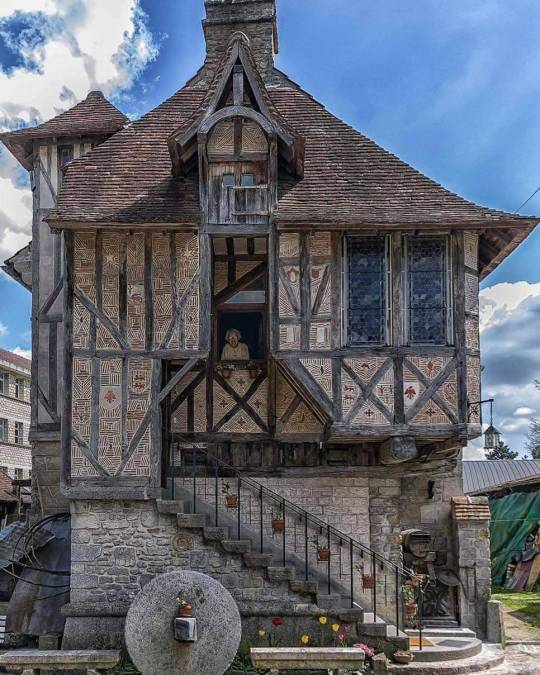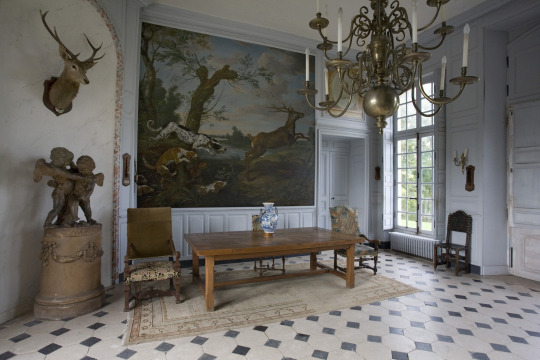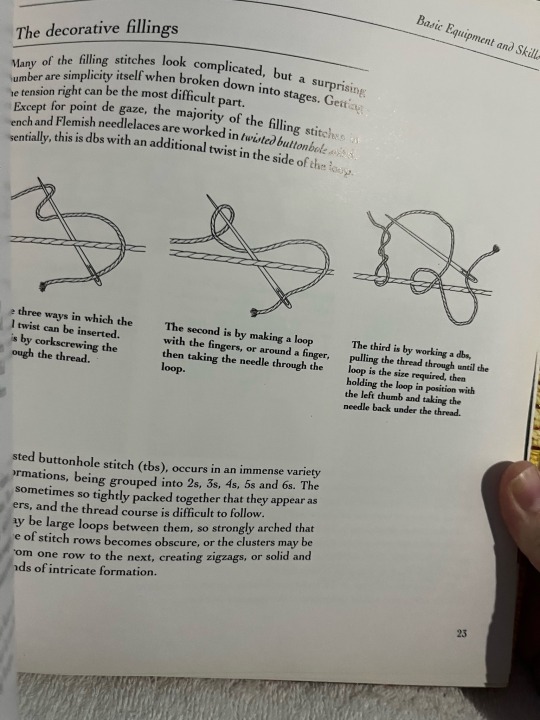#Argentan
Text

Medieval house built in 1509 in Argentan, Orne, FRANCE
373 notes
·
View notes
Text

16th-century St. Martin Church of Argentan, Normandy region of France
French vintage postcard
#normandy#church#historic#photo#briefkaart#vintage#region#argentan#th#sepia#photography#carte postale#postcard#postkarte#france#postal#tarjeta#ansichtskarte#french#old#martin#st#ephemera#16th-century#postkaart#century#st. martin church
30 notes
·
View notes
Text
BD et recherches...

View On WordPress
#2e DB#Argentan#Armée française#Ecouché#Histoire militaire#La Nueve#Les carnets de route d&039;un croisé de la France libre#Logistique#Poche de Falaise#Raymond Dronne#Régiment de marche du Tchad#Seconde guerre mondiale#Témoignage
0 notes
Text
Motif sur la ville d’Argentan
Projet en collaboration Davina Mury
2021-2022



















Au cours de la première année de notre formation DN MADE, nous avons eu l'opportunité de participer à la rénovation de la mairie d'Argentan en réalisant une bâche qui recouvrira les échafaudages lors des travaux mettant en avant les motifs architecturaux de la ville.
Pour cela, nous avons effectué une observation des bâtiments d'Argentan afin de sélectionner deux motifs que nous avons reproduits de différentes manières à l'aide de pochoirs, de tampons, etc.
Nous avons choisi les rendus qui nous semblaient les plus intéressants et avons créé une composition avec. Ensuite, nous avons intégré notre travail à celui des groupes situés au-dessus et au-dessous de nous (sur la bâche).
Enfin, nous avons placé la silhouette de Fernand Léger, l'un des symboles d'Argentan, au centre de la bâche afin de faire le lien entre les deux parties.
0 notes
Text
I don’t know why I ever thought you could draw a direct line from one lace to another (exhaustion) when I know for a fact that most needle lace traditions copying each is innuendo and heavily implied but almost never straightforwardly proven… it takes loops around like the lace itself.
#needle lace discussion#you would be Shocked to know that basically all lace traditions are Understood to have copied something else#but the only ones that I can say with certainty is Youghal copied raise Italian lace so gros point#argentella is made from the most difficult stitches Argentan ever devised#like even Burano is a copy of first Alencon and then point de gaze#but could I PROVE that Burano was copying them? probably not with any certainty it’s just one of those things#needle lace is weird and I have a headache now#no wonder fashion historians just copy the facts they got from everyone else without double checking them
0 notes
Text

Les Modes : revue mensuelle illustrée des arts décoratifs appliqués à la femme, no. 3, vol. 1, 1 mars 1901, Paris. Robe de dîner (Modèle Rouff). Cliché Reutlinger. Bibliothèque nationale de France
ROBE DE DINER (Modèle Rouff). — Robe de dîner en armure étincelle rose très pâle. Le corsage à pointe Louis XV, agrémenté de nœuds diamantés se fondant dans le fouillis des paniers de mousseline de soie. Le devant et le bas de la jupe incrustés de point d’Argentan.
DINNER DRESS (Rouff). — Very pale pink sparkle weave dinner dress. The Louis The front and bottom of the skirt inlaid with Argentan stitch.
#Les Modes#20th century#1900s#1901#periodical#fashion#fashion plate#color#description#bibliothèque nationale de france#dress#gown#Reutlinger#photograph#Modèles de chez#Maison Rouff#march color plates#embellished march color plates
270 notes
·
View notes
Text

This Medieval House, Located In The French Village Of Argentan, Built In 1509
185 notes
·
View notes
Text
pt III the wedding dress: crowley's shirt's ruffles (the brainrot is in terminal stages only palliative care is possible now)
OKAY. I'M SORRY FOR NOT POSTING FOR A WHILE BUT I AM HERE MAGGOTS (WHILE YOU'RE ALL BEING SO FUCKING LOVELY AND AMAZING ON THE COLLEGE POST WHICH TERRIFIES ME).
The last update was the shirt (everything related to aziracrow wedding brainrot is on my blog with the tag weirdly the nightingales wed) and I talked so long about the shirt and the Regency influences and the Jane Austen part that I realised I'd need a separate post for the ruffles. So. Here we are.

THE RUFFLES OVERVIEW: I spent too much time on this, but let's go. The ruffles were taken from that 1805-10 Regency evening gown that inspired the entire neckline, and they're the same material, muslin. They're overlaid with Alencon lace, the reason for which shall be stated below. I stopped the ruffles at the edge of the square neckline rather than going around the neck because given how the coat will be buttoned, it's not necessary and would just add bulk. For the same reason the ruffles would be sewn down at the edge with a French seam (it won't add lines to the silhouette or bulk, a maggot recommended that stitch) to prevent it from getting displaced.
THE LACE OVERVIEW: Oh, the fucking lace. Okay. So, this part of the dress was supposed to represent Shakespeare's time, the Edwardian era, from the Shakespeare/Hamlet scene in the season 1 episode 3 cold open. So I wanted to choose a lace that was popular in England at that time. I looked up the types of laces and their history, and found that Alencon lace best suited my purposes. It is the most popular lace for wedding dresses now. The lace would have motifs of birds (nightingales), leaves (Crowley's plants), angel wings (self-explanatory) and flowers (traditional for this lace).
THE NICE AND ACCURATE HISTORY: Ah, textile trade in the Edwardian era, exactly how I thought I'd be using my brainpower in the year of our Lord and Saviour Bildaddy 2024. Okay, the reason I chose Alencon lace was that during the end of the 16th century (which was around the time when Hamlet was written, 1599-1601, a direct reference to the episode), French lace was most popular in England. There were other popular lace imports, from Belgium, italy etc, as well as lace made in Devon (which wasn't as popular), but Queen Elizabeth had maintained ties with the French court and used lace on her gowns and that's how lace became fashionable. So I picked French lace.
Now the other types of French lace, Chantily lace and Argentan lace, weren't invented at the time Hamlet was written, so I was left with Alencon. The wedding thing was a bonus, honestly. Alencon lace originated in France in the 16th century, was called "Queen of Lace" and was a luxury. I do believe Aziraphale of the infamous I have standards would approve.
Soooooo. There you have it. The detailed real history behind the real lace on the ruffles of a fictional character's fictional dress for their fictional wedding that's not canon.
*contemplates life choices* Well, this isn't the very worst choice I've made, at least.
...that honour would belong to the cufflinks. Next update.
#good omens mascot#weirdly specific but ok#asmi#maggots#good omens#good omens fandom#crowley#aziraphale#weirdly the nightingales wed#good omens brainrot#at terminal stages#wahoo#aziracrow#it starts as it will end with a garden#fashion history#shakespeare#hamlet#dress design
20 notes
·
View notes
Photo

This medieval house, located in the French village of Argentan, built in 1509
199 notes
·
View notes
Text

15th-century St. Germain Church of Argentan, Normandy region of France
French vintage postcard
#vintage#photography#germain#postkarte#french#carte postale#postal#region#th#briefkaart#france#postcard#church#old#normandy#15th-century#argentan#photo#ansichtskarte#sepia#postkaart#century#ephemera#st. germain church of#tarjeta#st#historic
30 notes
·
View notes
Text

This Medieval House, Located In The French Village Of Argentan, Built In 1509
4 notes
·
View notes
Text



En bordure de la route reliant Argentan au haras du Pin, s’élève le château de Bourg-Saint-Léonard. Édifiée sous Louis XV pour un ménage parisien, l’élégante demeure se déploie entre une cour d’honneur et un parc à l’anglaise prolongé par la giboyeuse forêt de Gouffern. Raffinée et bucolique, elle témoigne du goût sophistiqué pour la nature qui s’est épanoui à l’époque des Lumières.
11 notes
·
View notes
Text

Medieval house built in 1509 in Argentan, Orne, France
12 notes
·
View notes
Text
Alright… Pat Earnshaw’s book Needlelace!

This is an incredible book for people interested in making advanced lace or researching lace but you have to know how to use it! It’s not for beginners though. At all. Every single lace book, even the ones DEFINITELY not for beginners, has an introduction where they tell you how to make the lay down what Earnshaw calls the ‘outline thread’ (and from here forward, I will be doing the same because that’s genuinely helpful, why do I keep forgetting words and phrases I definitely know?), complete the filling stitches (another phrase I forgot!), and finish the cordonnet, which you’d THINK is all you need to get started. Anyway, you would be wrong. Which is why I continually recommend classes or books written for beginners.
Why is that? As a beginner, you have no idea what you’re looking for. Should you stumble across it, you have no idea what you’re looking *at*.
Pat Earnshaw’s diagrams are incredible, but as a novice, they were far, far too detailed for me to understand. And a lot of them don’t have detailed instructions or labels, just companion information to the diagrams. So, if you want to read this book, you have to know how read needle lace diagrams. And… you have to be willing to experiment (but we’ll get to that in the cons section).
What separates this from the transition-into-intermediate Intermediate Technical Instruction is it isn’t confined to *just* technical instruction. She gives the formal names of different laces (only needle laces with grounds, mind you, and only covers French and Belgian laces at that, except Reseau Venise, although she does provide a basic description of the Burano setup).
Pros: You will know more about different methods to work lace, basic details about different kinds of lace (which are named explicitly throughout), and the stitch guide is extensive. Her diagrams (once you learn to read them) are incredible. They will take you from unconscious incompetence to conscious incompetence. Or even conscious competence. There are really helpful tips throughout, and a lot of them will prevent you from making the mistakes that people often make in their transition to intermediates. The really frustrating ones you have no idea how to handle or prevent. That it seems like only you are doing!!! It is an excellent introduction to which stitches are used in which traditional (French and Belgian) laces and gives explanation and diagrams for very advanced stitches (like the one I adapted for the center of my lily; the stamens were from Catherine Barley’s book, however). Sometimes I keep it by my bed so I can read about the lace or look at the stitches for inspiration. The explanation of things like flat needle laces is very detailed and informative. That kind of specialized knowledge (often taken as a given when you get to a certain level) can help you understand the ideas behind the choices better. It’s useful as a reference, when you want to do your own research, and when you want more information to do your own thing in general. She also spotlights needle lace contemporary artists (from the 80s) and their art in the last chapter.
I personally want to make traditional lace in Alencon, Argentan, and Argentella, and point de gaze and that covers the stitches in all four was a huge selling point for me. (Btw, I will always refer to my own work that uses Alencon stitches or similar design elements by either point de gaze or point de gaze inspired for Reasons, most of which are summarized as ‘I Hate The French’)


Sorry for the terrible picture quality and description, but I wasn’t getting out of bed for this. Maybe I’ll fix it later, maybe I won’t.
Cons: Not all the information is accurate and it’s focused on these specific lace traditions. There are easier ways to make some stitches, although no one has yet tried to replace it with a more up-to-date guide (in English, anyway). The book is Very 80s. While it describes, in great detail, how to make traditional lace, as well as compares with antique patterns, all of the patterns and samples made for the readers are done in contemporary art fashion (as was the way in the 80s). The samples are worked in bright colours, which can make the working method a bit difficult to parse. She also works the lace away from her (I work it towards) so I end up turning the book around a lot (I turn it back to read it and to examine the diagrams). If you work towards then you will probably have to turn it around often as well. Additionally, because there are So Many samples, the tension in a lot of them is Not Ideal and that’s why I have to refer to the diagrams. Sometimes I will have this out with another book (even if no other book addresses the stitch in question, which is fairly common, so I understand the reasoning correctly)
Who is this for: people who want a stitch guide, especially if they want to make more complex pieces or you’re interested in making traditional lace, and extra if you want to design your own patterns.
Overall: this is a reference book (and an out-of-date one). Pat Earnshaw was a researcher as well as a lacemaker (I want several other books she wrote, covering identification and the history of lace) and this book is not meant to be a standalone. Not in the least bit. You know those specialized companion books you see at craft fairs for advanced crafters? That’s what this is. A sort of extremely niche encyclopaedia. As far as I know, she was not a specialist in any of these laces. So, this would also maybe not be a good fit for an expert in their specialty (as most needle lacemakers specialize). It is possible to outgrow this book, it is just very, very difficult. (As you can see because I am several years in and still singing its praises.)
#needle lace#fiber crafts#needlepoint lace#fiber arts#needlework#lace making#fiber art#lacemade#lacemaking#book review#I really love this book#love this book
7 notes
·
View notes
Photo

Soldiers of the 317th Infantry Regiment of the 80th American Infantry Division rest on streets in the French city of Argentan next to a knocked out German Panther tank from the 2nd Battalion of the 33rd Panzer Regiment of the 9th Panzer Division. 21 August, 1944
9 notes
·
View notes